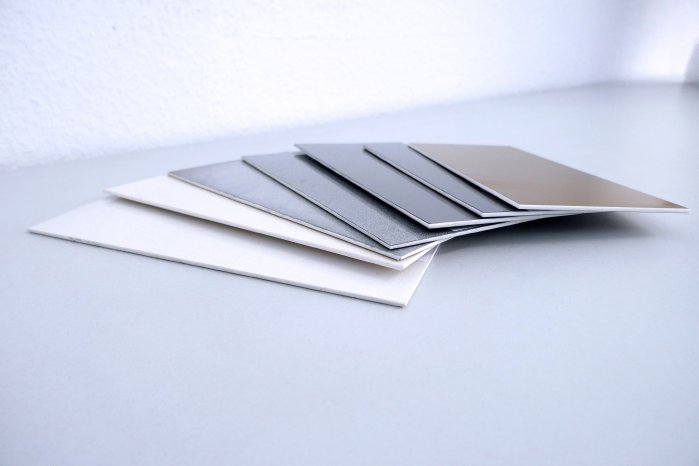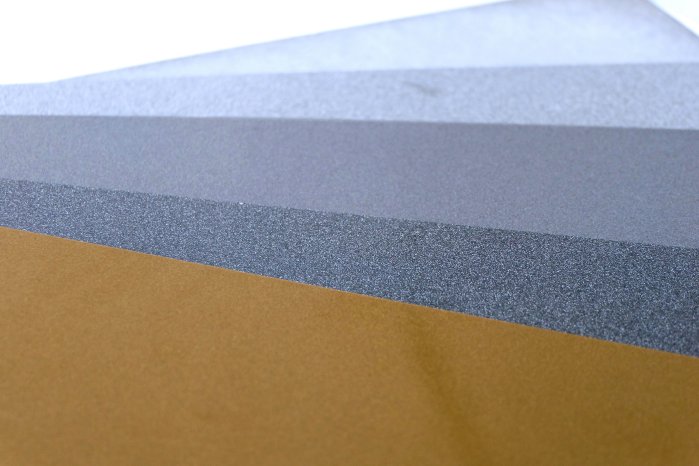Plastics are popular because of their low dead weight and an extremely high dimensional stability. That makes them an all-rounder for countless industries and applications. Such as the Sheet Moulding Compound (SMC) and the Bulk Moulding Compound (BMC): Here, panel-shaped, doughy masses made of thermoplastic reaction resins and glass fibres are pressed into their future shapes. A powder coating can be integrated directly into the pressing process. The powder coating is sprayed into a mould and hardens within a few seconds. The SMC/BMC can be inserted and pressed right away. During the hot pressing process, the powder coating then enters into a chemical bond with the material. It is scratch resistant and very resistant against chemicals, graffiti and UV radiation
Globally, this process had previously only been available for standard RAL colours. FreiLacke researchers managed to expand the spectrum by adding three metallic colour shades – standard, pearl lustre and silver. Additional colour shades will follow soon. "The challenge with metallic colour shades is that the application on a hot mould surface results in an uneven effect following the alignment of the metallic particles after the coating process", explains Daniel Hauser, one of FreiLacke's laboratory technicians. "The effect formation in the case of PIMC is vastly different than that of conventional coatings. We were able to overcome this challenge by using new formulas and innovative raw materials".
Inquiry about facade elements
A specific customer inquiry triggered the development at FreiLacke. A manufacturer of facade elements, who has been working with the Black Forest coating experts for years, wanted to directly provide the coatings of its PIMC elements with a metallic look. The coating experts got to work and managed to develop a practical solution in just three months.
In its laboratory in Döggingen in the Black Forest, FreiLacke has a state-of-the-art laboratory press with cooling unit that meets all of the requirements to create samples for viewing or inspections. "We used it to perform experiments on the original substrate with different time, temperature and pressure settings", explained Hauser. In addition, many surface and cause analyses were conducted in the laboratory until the correct parameters were found.
Fewer work steps and less logistics
The surfaces generated in the PIMC process feature an excellent chemical and mechanical resistance and are well-suited for a continuous use outdoors. The material is free from solvents, hazardous substances or carcinogenic raw materials. PIMC is fire-retardant in accordance with EN45545, HL3, R1 and, thanks to its good properties, it can be used for many applications – for example kitchen sinks, shower trays, facades, lights, athletic equipment or in vehicle construction.
A major benefit of this process: By combining pressing and coating into a single work step, the laborious subsequent coating (including the associated parts handling) can be eliminated, as well as the extensive logistics required when transporting the components to the internal coating plant or for external coating. When using the PIMC process, the components stay in-house until they are completed and can then be shipped to the customer right away. Another advantage: Added value for the operators and lower costs and higher quality for customers.



